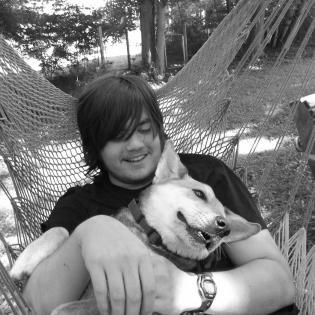Getting our Paws into the Cause
Young people identify an animal welfare organization to research, and then develop a plan to help persuade others to take up the cause(s) of this group using an advocacy type of their choice.
The learner will:
- select and research a cause of a nonprofit animal welfare group.
- develop a persuasive advocacy addressing “the cause” of the group.
- copies of the handouts below
Instructions
Anticipatory Set
Read aloud the poem in the handout below about St. Francis D'Assisi and his advocacy for animals. Discuss the questions in the handout to identify purpose and effectiveness of his advocacy.
Optional: The Sample Advocacies handout has more examples for discussion
Tell the learners to select and advocate for an animal welfare cause using the letter writing method of advocacy.
They may choose to use a different strategy such as creating a presentation from their research, creating an informative and persuasive piece of art, or creating a social media campaign. An advocacy letter (and these other strategies) provides information as well as a point of view. They are often written in a way to persuade the reader to agree with the writer’s point of view and take action.
The handout below provides a list of nonprofits and links to their websites that work for animal welfare. The youth may research the organizations and their needs in order to select the one they care about.
Using the styles and techniques learned in the previous lessons, they plan and carry out their advocacy for an animal welfare issue.
Philanthropy Framework
-
Strand PHIL.I Definitions of Philanthropy
-
Standard DP 02. Roles of Government, Business, and Philanthropy
-
Benchmark HS.6 Describe how the civil society sector is often the origin of new ideas, projects and innovation and social renewal.
-
Benchmark HS.7 Describe how the civil society sector provides mediation for individuals and governments.
-
-
-
Strand PHIL.II Philanthropy and Civil Society
-
Standard PCS 01. Self, citizenship, and society
-
Benchmark HS.4 Describe and give examples of characteristics of someone who helps others.
-
Benchmark HS.5 Describe civil society advocacy organizations and their relationship to human rights.
-
-
Standard PCS 05. Philanthropy and Government
-
Benchmark HS.1 Define and give an example why conflict may exist between individual freedom and the community.
-
Benchmark HS.10 Discuss the results of private citizen voluntary action intended for the common good on public policy changes.
-
Benchmark HS.9 Explain the role that public interest groups play in public policy formation.
-
-
Standard PCS 07. Skills of Civic Engagement
-
Benchmark HS.3 Participate in acts of democratic citizenship in the community, state or nation, such as petitioning authority, advocating, voting, group problem solving, mock trials or classroom governance and elections.
-
-
-
Strand PHIL.IV Volunteering and Service
-
Standard VS 01. Needs Assessment
-
Benchmark HS.1 Identify a need in the school, local community, state, nation, or world.
-
-
Standard VS 02. Service and Learning
-
Benchmark HS.1 Select a service project based on interests, abilities, and research.
-
-
Standard VS 04. Raising Private Resources
-
Benchmark HS.3 Describe a detailed action for service.
-
-
Standard VS 05. Integrating the Service Experience into Learning
-
Benchmark HS.2 Evaluate progress on the service-learning project before, during, and after the project.
-
Benchmark HS.3 Identify outcomes from the service.
-
-
